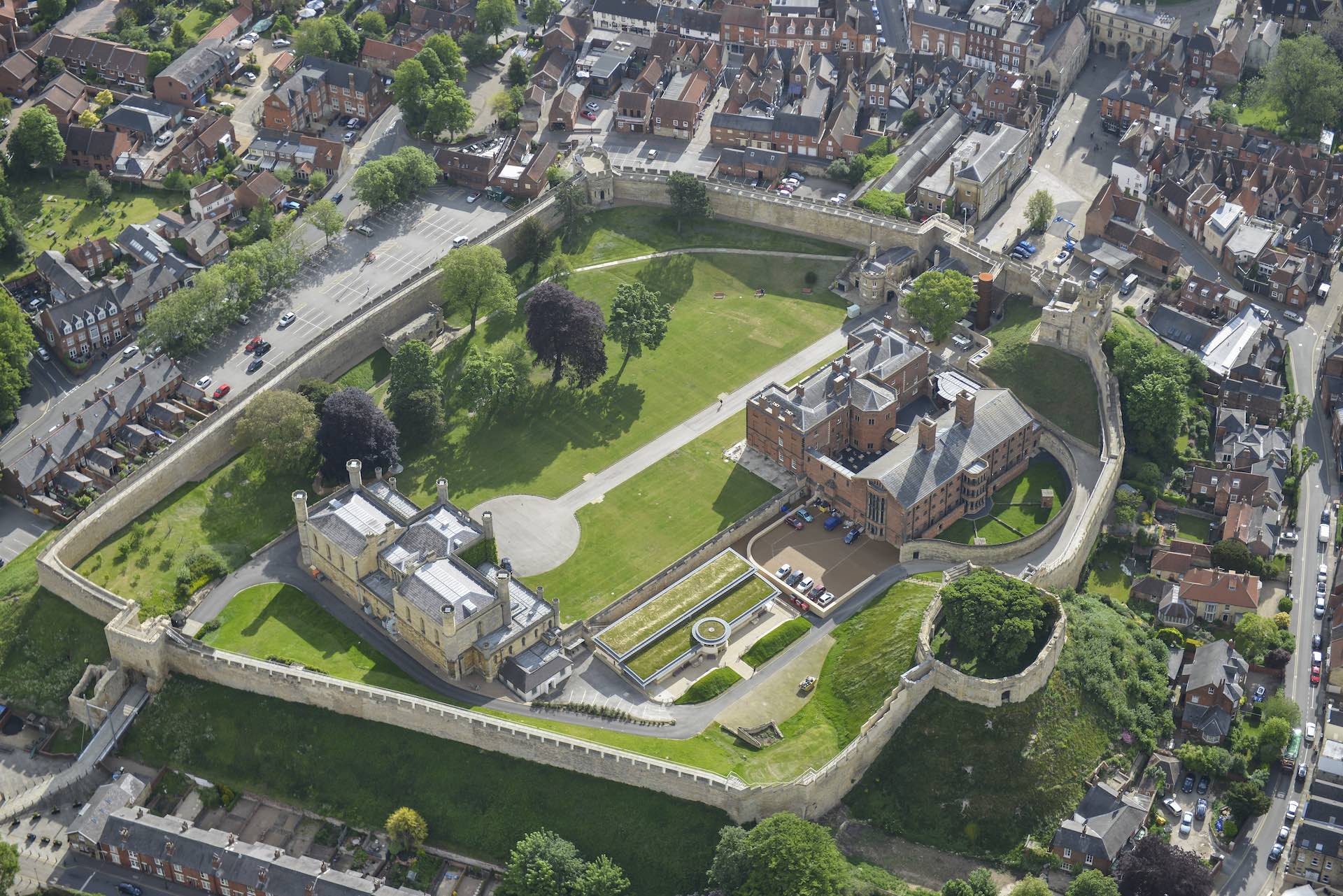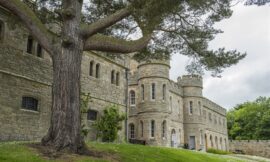Lincoln Castle, located in the historic city of Lincoln, England, is one of the best-preserved Norman castles in the United Kingdom. Built by William the Conqueror in 1068, just two years after the Norman Conquest of England, the castle has played a pivotal role in English history over the centuries. It has served as a royal fortress, a military stronghold, a court, and even a prison, evolving with the changing needs of the times. Today, Lincoln Castle stands as a remarkable testament to England’s medieval past, offering visitors a unique glimpse into the nation’s turbulent history.
Origins and Early History
The origins of Lincoln Castle date back to the aftermath of the Battle of Hastings in 1066, when William the Conqueror sought to consolidate his power across England by building a series of castles. Lincoln’s strategic location, perched on a hill with commanding views of the surrounding countryside and the River Witham, made it an ideal site for a fortress. The castle was constructed on the site of a former Roman fort, repurposing the defensive advantages of the existing earthworks.
The initial structure was a motte-and-bailey castle, a common type of fortification in Norman England. It featured a large earthen mound (motte) topped with a wooden keep and surrounded by a walled courtyard (bailey). Over time, the wooden structures were replaced with stone, including the construction of stone curtain walls, towers, and gatehouses, transforming Lincoln Castle into a formidable stone fortress.
The Role in Medieval England
Throughout the medieval period, Lincoln Castle played a significant role in the power struggles that shaped England’s history. One of the most notable events was the Battle of Lincoln in 1141, during the period known as The Anarchy, a civil war between the forces of King Stephen and Empress Matilda. Lincoln Castle was held by the forces of Matilda, and the battle ended in a decisive victory for her supporters, resulting in the capture of King Stephen.
Lincoln Castle was also an important royal stronghold during the reign of King John (1199–1216). In 1216, during the First Barons’ War, the castle was besieged by rebellious barons allied with Prince Louis of France. However, the castle’s defenses held firm, and the siege was lifted following the death of King John and the subsequent reissue of the Magna Carta by his young son, King Henry III.
The Magna Carta Connection
One of Lincoln Castle’s most enduring claims to fame is its association with the Magna Carta, the iconic document signed by King John in 1215 that established the principle that everyone, including the king, was subject to the law. Following the signing of the Magna Carta, one of the original copies was sent to Lincoln Cathedral, which sits adjacent to the castle. This copy, known as the Lincoln Magna Carta, is one of only four surviving originals and is now housed in a specially designed vault within Lincoln Castle, alongside the Charter of the Forest, a complementary document that granted rights to the common people regarding the use of royal forests.
The presence of the Magna Carta at Lincoln Castle enhances the site’s historical significance, linking it directly to the early development of constitutional governance and the rule of law in England. Visitors to the castle can view the Magna Carta in its purpose-built exhibition space, which uses interactive displays and multimedia to explain its importance and legacy.
Architectural Features and Evolution
Lincoln Castle is distinguished by its impressive Norman architecture, which has been modified and expanded over the centuries. The castle’s stone curtain wall, which encircles the site, is nearly complete and provides a rare opportunity to walk along the original medieval walls. This wall walk offers stunning views of the city of Lincoln, including Lincoln Cathedral, and provides insights into the castle’s defensive capabilities.
Key features of Lincoln Castle include the Lucy Tower, a square stone keep built on the motte, which served as a final line of defense and a symbol of Norman authority. The castle also has two main gatehouses: the East Gate, which served as the primary entrance, and the West Gate, which was added in the 13th century. The gates are fortified with towers and defensive features, illustrating the castle’s role as a stronghold.
One of the most distinctive elements of Lincoln Castle is the Observatory Tower, added in the 19th century during the castle’s use as a prison. This tower, which resembles a lighthouse, was used by the prison governor to keep watch over the surrounding area and prisoners. The Victorian Prison is another notable feature, built within the castle grounds in 1848. This unique prison is one of the few remaining examples of a “separate system” prison, designed to keep inmates isolated from each other as a form of rehabilitation. The prison chapel, with its individual wooden cubicles for prisoners, is a particularly striking feature, offering a stark insight into Victorian penal philosophy.
The Castle as a Prison
Lincoln Castle’s role as a prison is a significant chapter in its history, reflecting changes in penal practices from the medieval period through to the Victorian era. The castle’s prison housed a variety of inmates, including debtors, criminals, and political prisoners. The Georgian and Victorian prison buildings still stand within the castle grounds, offering visitors a unique look at the conditions of incarceration from those periods.
The Victorian Prison, now a museum, provides a vivid portrayal of life behind bars in the 19th century. It includes preserved cells, exhibitions on prison life, and displays that recount the stories of some of the inmates who were held there. The chapel, with its individual stalls designed to keep prisoners from seeing each other, is an eerie reminder of the isolation and discipline that characterized the Victorian penal system.
Restoration and Modern Use
Lincoln Castle has undergone significant restoration and conservation efforts over the years, aimed at preserving its historic fabric and making it accessible to the public. In recent decades, major restoration projects have been undertaken to stabilize the stonework, restore the Victorian Prison, and create new visitor facilities, including the Magna Carta Vault and the castle’s Heritage Skills Centre.
The castle now serves as a popular tourist attraction, offering a range of activities and experiences that bring its history to life. Guided tours, interactive exhibits, and special events such as medieval reenactments, falconry displays, and open-air concerts attract visitors from around the world. The castle’s picturesque grounds, with their sweeping lawns and ancient trees, provide a scenic setting for exploration and relaxation.
Lincoln Castle also plays a role in the community as a venue for public events, including seasonal markets, theatrical performances, and educational programs. Its role as a custodian of the Magna Carta and the Charter of the Forest underscores its importance as a symbol of Lincoln’s heritage and its contributions to the development of democratic principles.
Conclusion
Lincoln Castle stands as a monument to the resilience and evolution of English history. From its origins as a Norman fortress to its role in the tumultuous events of the medieval period, and later as a prison and symbol of justice, the castle has continually adapted to the changing needs of the society it served. Its enduring presence, alongside the majestic Lincoln Cathedral, forms a powerful visual and cultural landmark that connects modern visitors with the rich tapestry of England’s past.
Today, Lincoln Castle not only preserves the legacy of the Norman Conquest and the Magna Carta but also offers a vibrant space for education, exploration, and community engagement. Its walls, towers, and exhibits tell the stories of the people who built, defended, and lived within its confines, making Lincoln Castle a living museum of English history. Whether exploring its ancient walls, viewing the Magna Carta, or delving into the grim realities of its Victorian Prison, visitors to Lincoln Castle are offered a profound and immersive connection to the past, making it a treasured site of historical and cultural significance.



